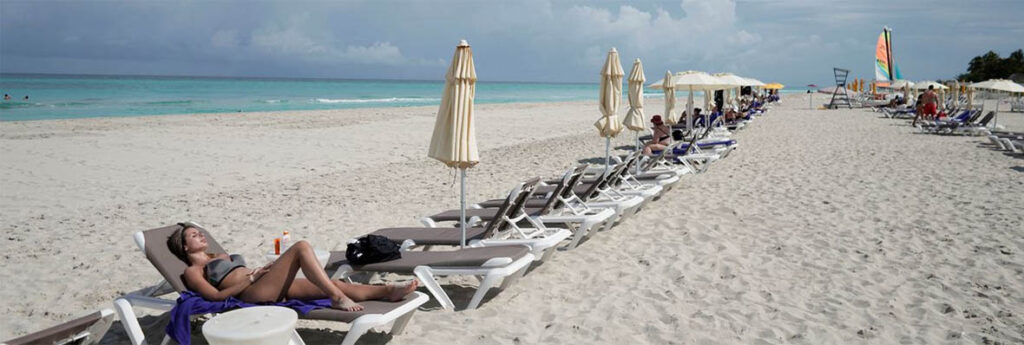Little by little, vacationers are returning to one of the Caribbean’s most iconic beaches, which has been a nearly abandoned strip of glittering sand and turquoise seas for more than a year. Varadero, the surfside star of Cuba’s crucial tourism industry, is slowly getting ready for Cuba’s planned Nov. 15 formal reopening to global visitors.
A handful of tourists, largely from Canada and Russia, have strolled across the 22-km. swath of sand in recent weeks, hunting out the scattering of restaurants that have reopened, dawdling over handicrafts at the few stands that have reappeared.
Medical personnel scan hotel visitors for signs of fever. Waiters, desk clerks and sellers of trinkets wear doubled masks as they cater to unmasked visitors in bathing suits. Largely empty tour buses run down the main boulevard.
At least some of the 60 or so hotels in Varadero remain closed, or pressed into service as quarantine centres. But others are already running.
About 100 people were staying at the 386-room Iberostar Selection Varadero on one recent day.
Juan Carlos Pujol, Cuba operations manager for the Spanish hotel chain, said the company had taken advantage of the pandemic closure to update restaurants or make adjustments for health measures, such as moving tables further apart or extending the reach of wi-fi to broader open expanses.
“We are very content and hopeful because now you can see the light at the end of the tunnel and we want to resume operations how and begin to recover what we had always had,” he said.
The pandemic was a terrible blow to tourism in Cuba, which depends heavily on the industry, especially after a series of ever-tighter embargo measures imposed by Donald Trump – and that have not been significantly relaxed under his successor, Joe Biden.
“I’ve had many months without work, feeling horrible,” said Lizet Aguilera, a 55-year-old weaver who recently reopened a souvenir stand that had been closed for 16 months. Even so, she said she worries that she could be infected with COVID-19 while at work and bring it home. “When I reach my house, before greeting anybody I take a bath,” she said.
Another vender, Richard Martin, estimated that only about 50 of the resort’s 5,000 artisans so far have returned to sell after months of hardship. “It was very difficult,” he said. “The need, the fear, the scarcity. We have confidence in the vaccine. What remains is to open, to show that it functions.”
Cuba says it plans to have vaccinated 90% of its eligible population by the end of November – taking advantage of its advanced biomedical industry to create the only locally developed COVID-19 vaccines in Latin America.
That has allowed officials to plan a gradual reopening to visitors, particularly in Varadero, some 150 km east of Havana.
The town itself has only about 6,000 residents, but it provides thousands of jobs for people in nearby Cardenas, Boca de Camarioca and Matanzas, and has some 20,000 hotel rooms – as well as a number of private residences that host visitors.
In 2019, Varadero received about 1.5 million of the 4.3 million tourists who came to Cuba— a number that collapsed when the pandemic hit and Cuba largely closed itself off to visitors.

